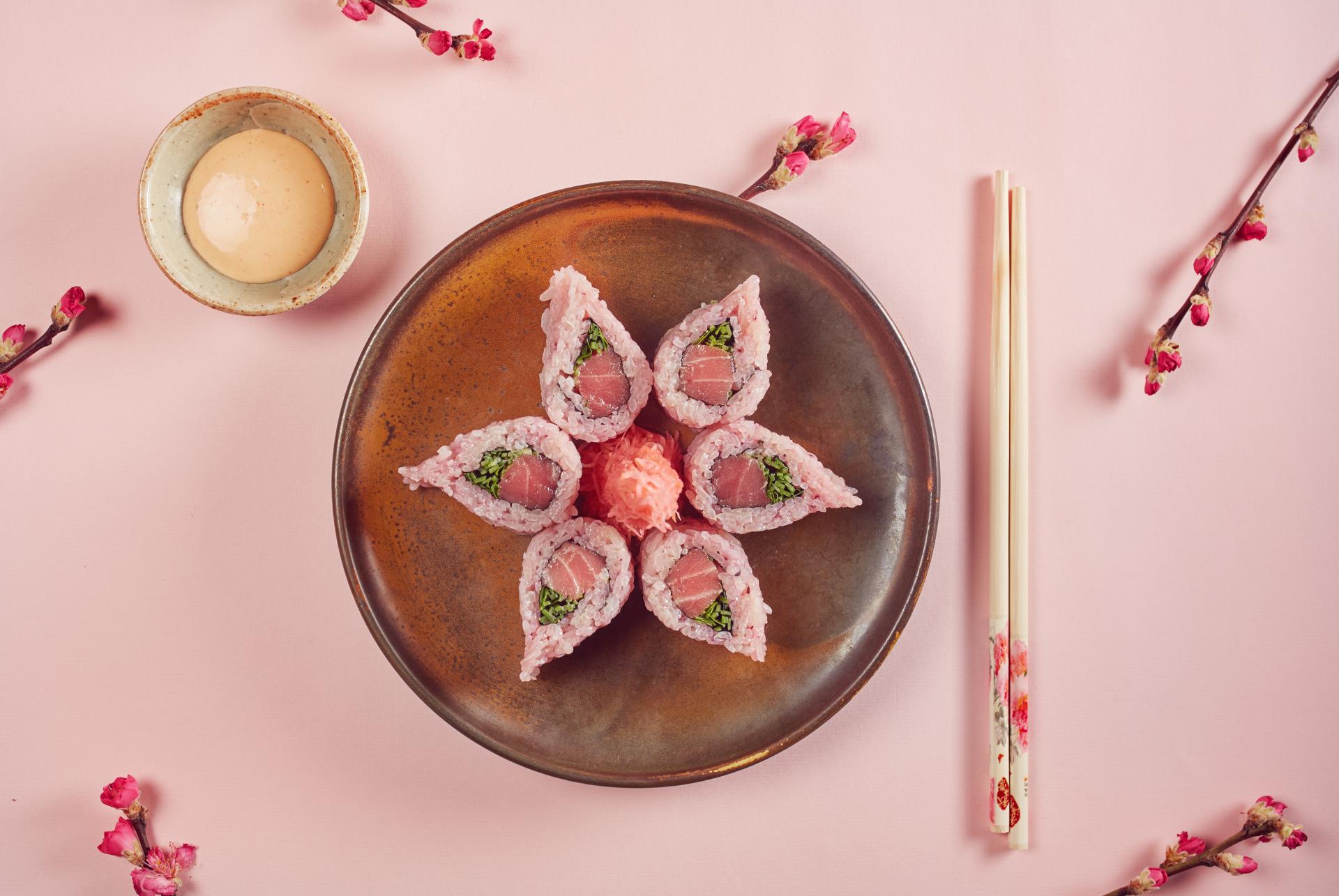When it comes to cherry blossoms, we are talking about the beautiful, fragile flowers that bloom in spring, extremely splendid in pink and white. Every year, Japan, China, Taiwan... welcome a large number of tourists from all over the world to see the spectacular cherry blossoms blooming throughout the region. However, this year, due to the increasingly complicated Covid-19 epidemic situation, the border blockade (of countries) along with the announcement of the cancellation of cherry blossom festivals in some places in Japan has caused many tourists to have tomiss the cherry blossom season.
Don't be sad, you can enjoy cherry blossoms in another way that is equally interesting, sophisticated and... filling.
Cherry blossoms are not only the national flower, a symbol of Japanese literature and art, but also play an important role in the typical cuisine of the Land of the Rising Sun, creating unique flavors and adding beauty to the dishes.

Cherry blossoms are considered a symbol of luck and have become the national flower of Japan.
In addition, cherry blossoms are also used for decoration, as a pale pink food coloring and as a seasonal ingredient in modern cuisine. In Japan, cherry blossom petals and leaves can be purchased in supermarkets, of which Oshima cherry blossoms are the most popular for cooking because they have the right soft texture.
In China, cherry blossoms are also used as ingredients to prepare many elegant, beautiful and delicious dishes. In Vietnam, you can also order cherry blossom petals for cooking quite easily.
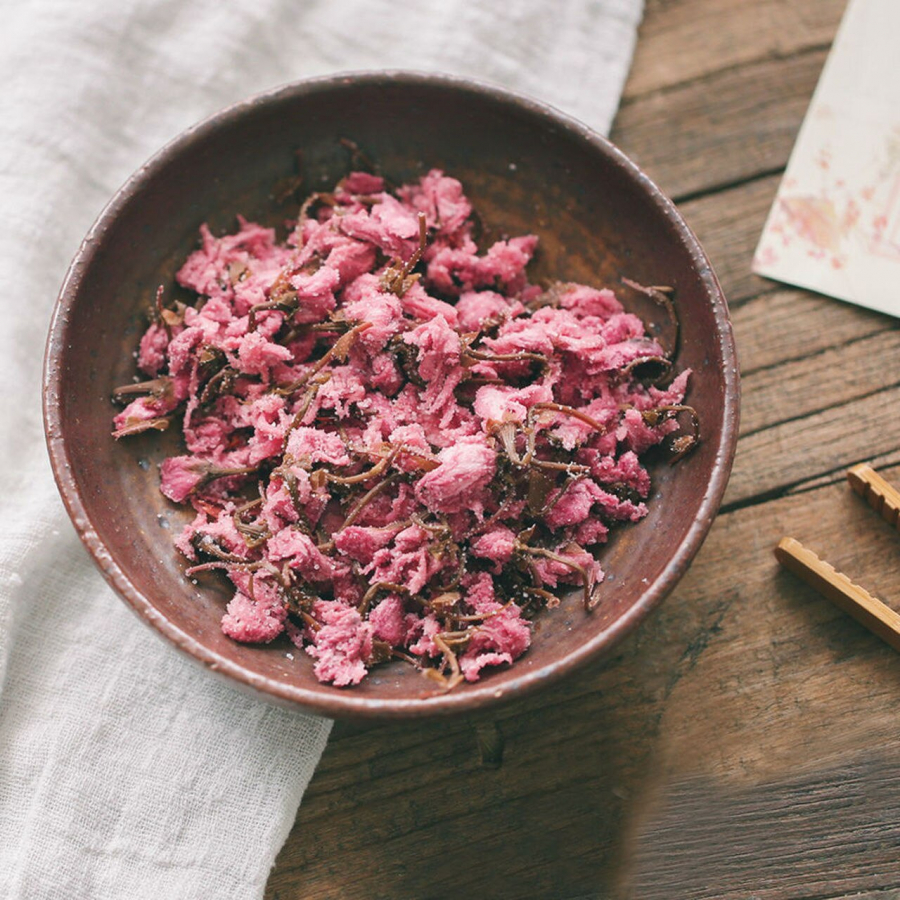
In addition to their brilliant beauty, cherry blossoms also have a very unique flavor, making them a popular ingredient in many Japanese dishes.
So, if you have to cancel your dream cherry blossom viewing trip, you can stay home and order or make these delicious and lovely "sakura" treats yourself.
Sakura mochi (Cherry mochi)
Sakura mochi is an indispensable dessert during cherry blossom season. This traditional rice cake is made from salted cherry blossom petals and is usually sold in March and April every year, especially during the Hina Matsuri (Japanese Doll Festival).
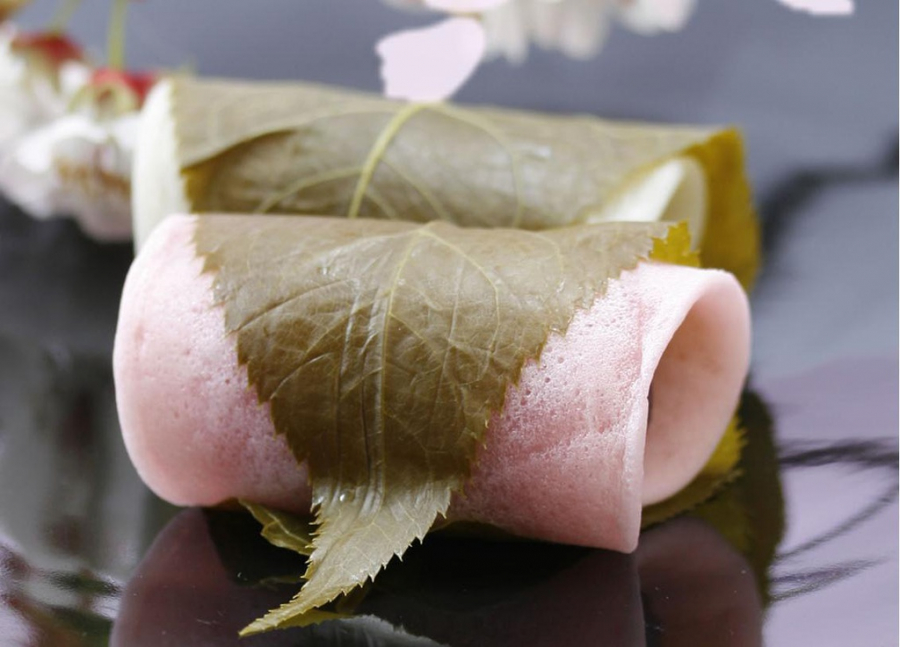
Chomeiji
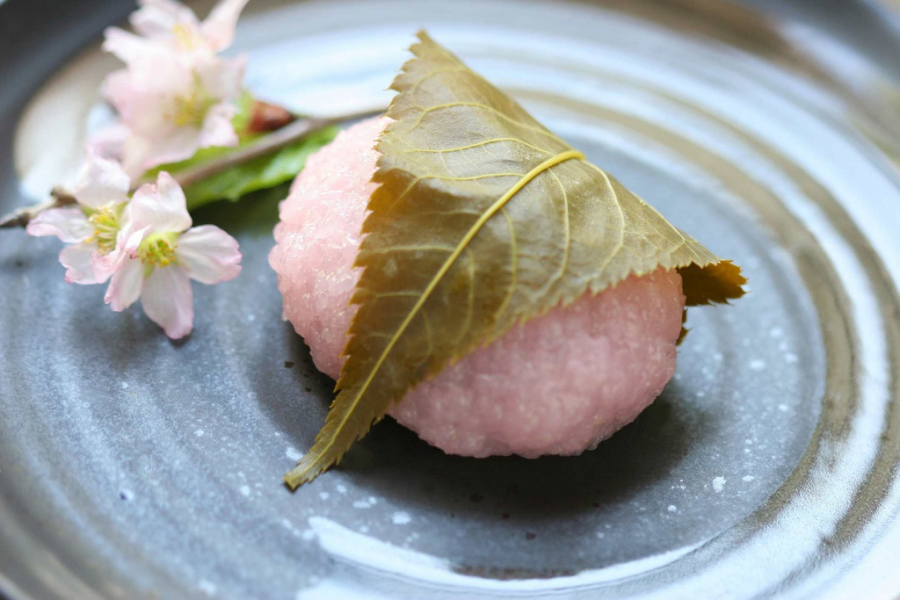
Domyoji
There are two types of sakura mochi today. Kanto's famous “Chomeiji” is made by kneading the dough into thin sheets, grilling them, and then wrapping them around cooked sweet red bean paste. Kansai's “Domyoji” uses glutinous rice to create soft, round mochi balls. In particular, cherry leaves soaked in salt water are used to wrap the eye-catching pink spring mochi. The aroma of the leaves, glutinous rice, and beans blends with the salty-sweet taste of each piece of cake in the mouth, making diners easily fall in love with this cake, right from the first time they enjoy it.
Sakura manju (Cherry blossom buns)
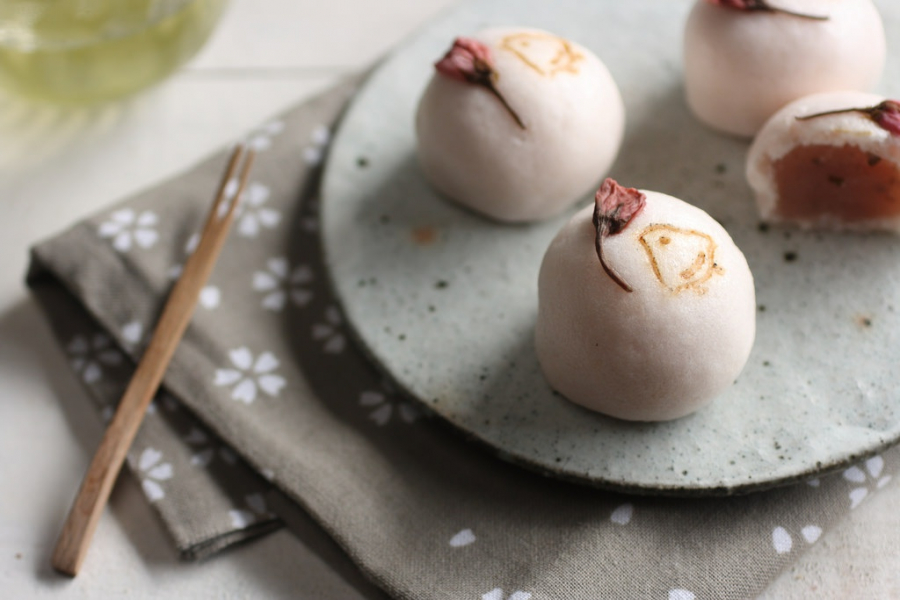
This cake is made from glutinous rice flour and traditional sweet red bean paste, then steamed in a steamer. To increase the attractiveness of the cake, people can make the crust with pink flour. For decoration, the Japanese use salted cherry blossoms placed on the cake. Processed cherry blossoms make the cake more fragrant and beautiful. However, not all types of flowers can be used, only double-petaled pink cherry blossoms (Yae sakura) are specially selected for processing.
Sakura yokan (Cherry bean jelly)
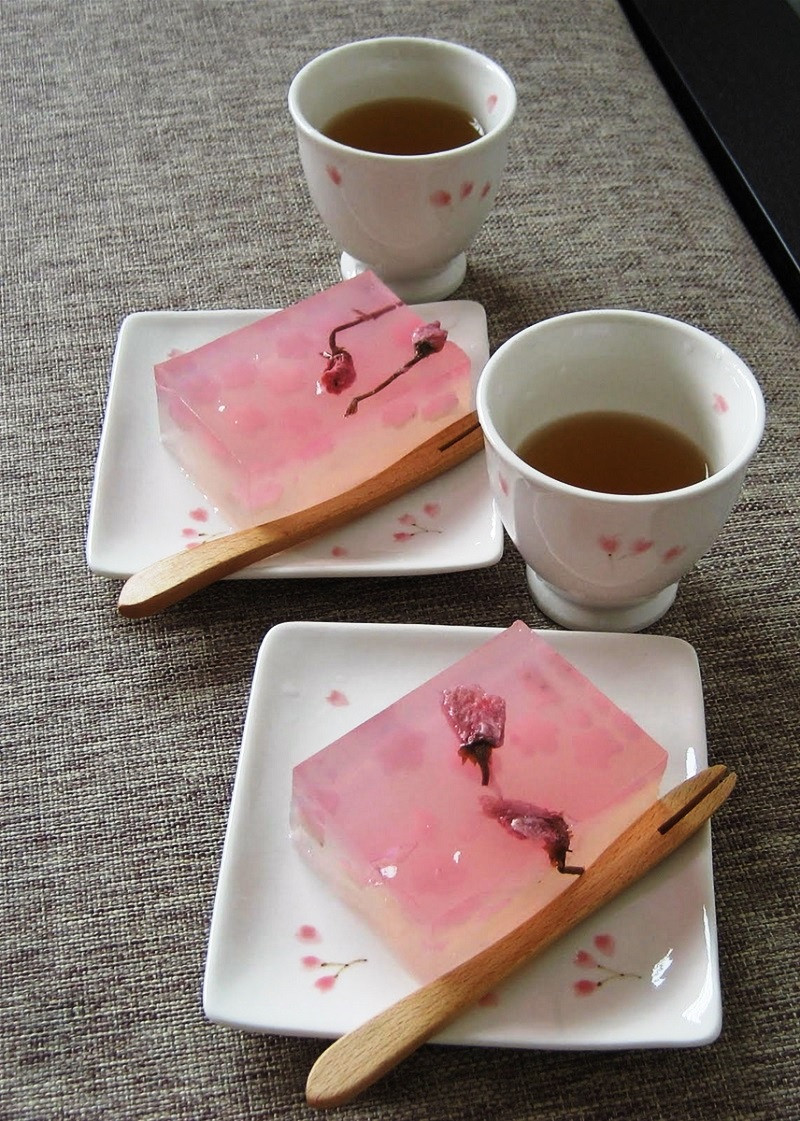
This is a jelly dish for hot summer days, made from a traditional Japanese jelly and sakuraan (cut cherry blossom petals), with the most popular filling being red bean paste. Yokan is usually made into square jelly balls and decorated according to each person's aesthetic taste. Typically, yokan is decorated with salted cherry blossom petals inside. Cherry blossom jelly has a characteristic light pink color, a sweet, cool taste with a light fragrance, is a specialty of the Japanese summer and is also the most anticipated dish of the Hanami festival.
Sakura Anmitsu (Cherry Blossom Tea)
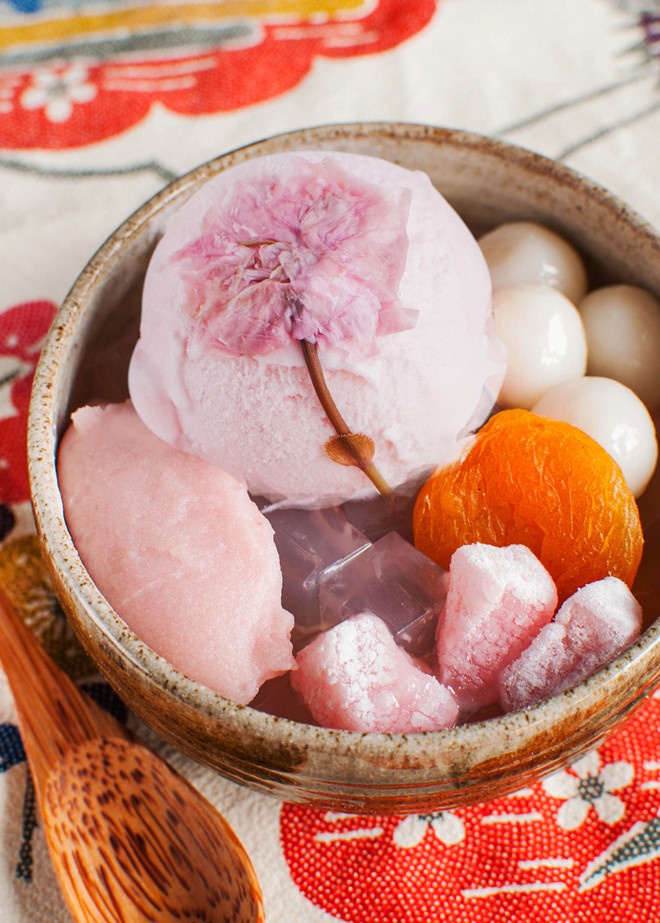
Sakura Anmitsu is one of the most popular refreshing desserts in Japan. The dish is a combination of many ingredients such as Kanten jelly, Gyuuhi Sakura-flavored marshmallows, Shiratama rice cakes, apricot jam... The highlight of Sakura Anmitsu is the ice cream blended with salted cherry blossoms with a slightly salty taste. The saltiness of the salted cherry blossoms and the sweetness of the ice cream create an extremely unique combination.
Sakurayu (Cherry Blossom Tea)

Sakurayu is the most authentic cherry blossom tasting experience besides eating the petals directly. Compared to regular cherry blossom tea, Sakurayu has a stronger flavor when the cherry blossoms are marinated with salt and plum vinegar and then dropped into a cup of hot water to preserve their shape and aroma. The taste of Sakurayu is similar to black tea but more delicate thanks to the characteristic mild scent of cherry blossoms. In addition, there is also green tea mixed with cherry leaves, which has a very characteristic slightly salty taste. This type of tea is often used in weddings because of its pure flavor, elegant beauty and brings luck to everyone. Sakurayu also has a slimming effect, so it is very popular with Japanese women.

The most common way to brew the tea is to place one or two cherry blossoms in each cup and remove the salt from the blossoms as desired before pouring hot water over the blossoms. The result is a light-colored tea with a light cherry blossom aroma and a strong, flower-salted flavor. For those who prefer a milder flavor, steep the blossoms in warm water for five minutes first.
Sakura SOBA (Cherry Blossom Cold Noodles)
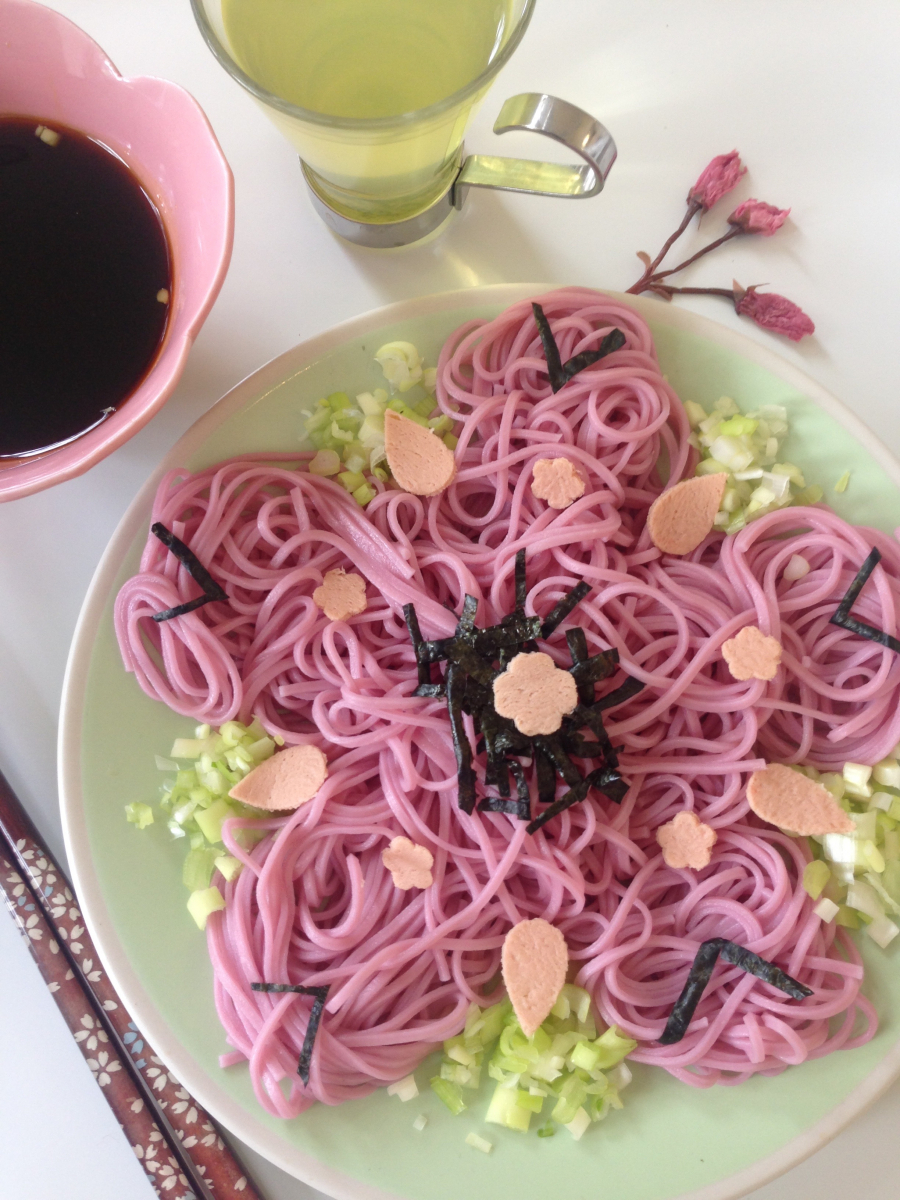
Sakura cold noodles are very popular in the Japanese summer. To make this type of noodles, people often mix perilla powder and cherry blossom powder into the flour to create the characteristic transparent pink color. This type of noodles is usually eaten simply with soy sauce so that diners can feel the aroma of cherry blossoms through each noodle.
Sakura ONIGIRI (Cherry Blossom Rice Ball)
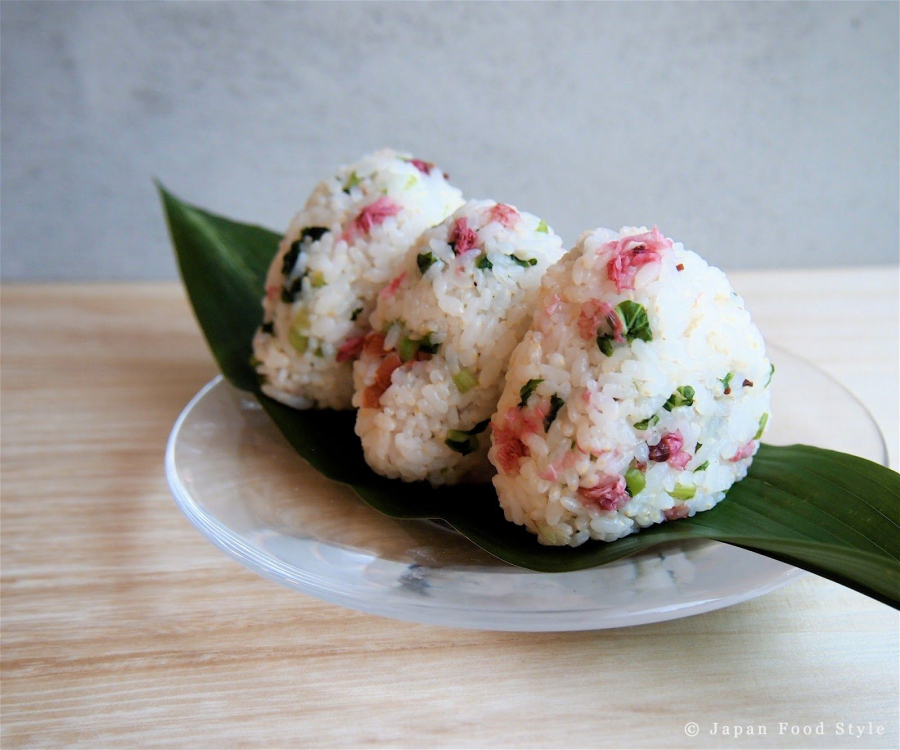

In spring, hot rice balls with cherry blossom flavor are one of the most popular dishes. Usually, this type of rice is often eaten with fish. Salt from salted cherry blossoms will add more flavor to the rice. The characteristic of this rice dish is its pink color and cherry blossom aroma.
Sakura no Shiodzuke (Salted Cherry Blossoms)
Salted cherry blossoms are not only an ingredient for other dishes, but also an attractive snack in themselves. For centuries, the Japanese have soaked fresh cherry blossoms in plum vinegar to preserve their characteristic pink color, then soaked them in salt and dried them to preserve the color and flavor of the cherry blossoms throughout the year.
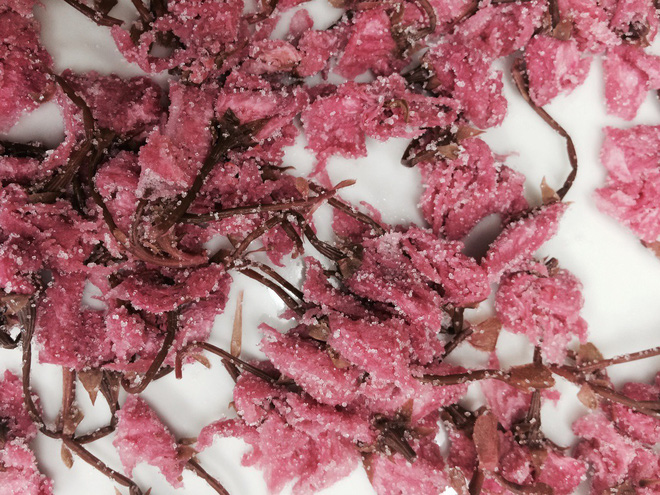

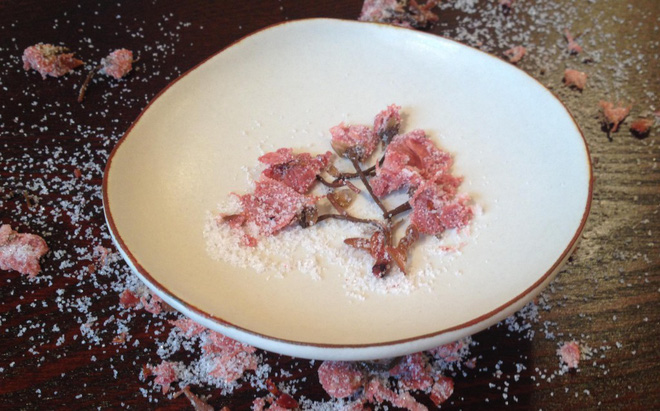
The principle of choosing cherries for dry salting is quite strict and complicated, they must be about 7 parts bloomed and still have the stem intact, washed and drained, then sprinkled with an appropriate amount of salt and left overnight. The next morning, squeeze out the salt water and add a moderate amount of white vinegar, continue to soak for 3 days. Finally, open the lid and dry in the sun for another 3 days until the cherry blossoms turn a brighter color.
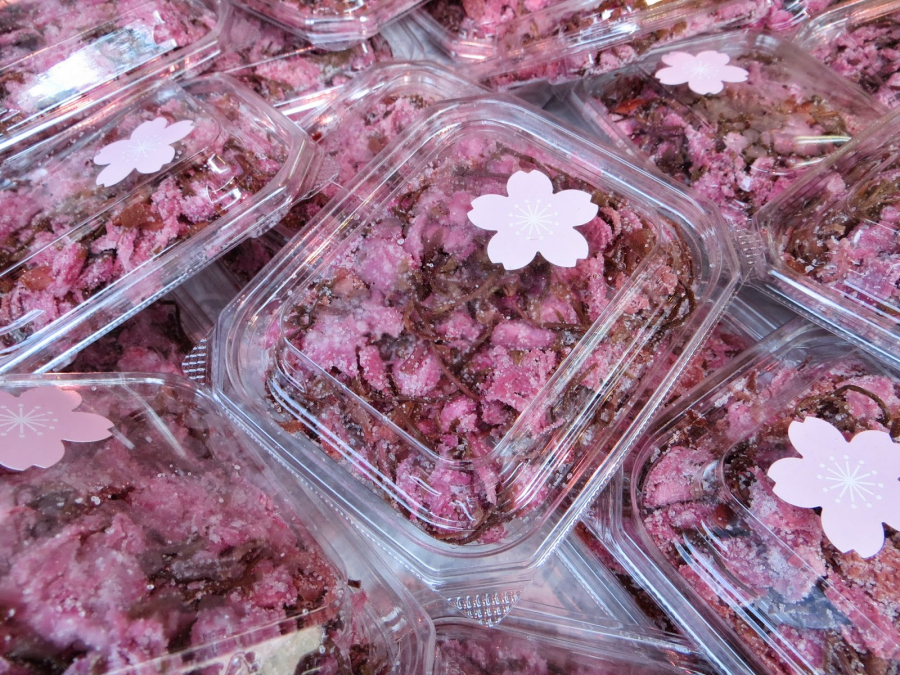
Hadano City in Kanagawa Prefecture is famous for producing the most famous pickled cherries in Japan. It also has a unique specialty called cherry onigiri that cannot be found anywhere else.





